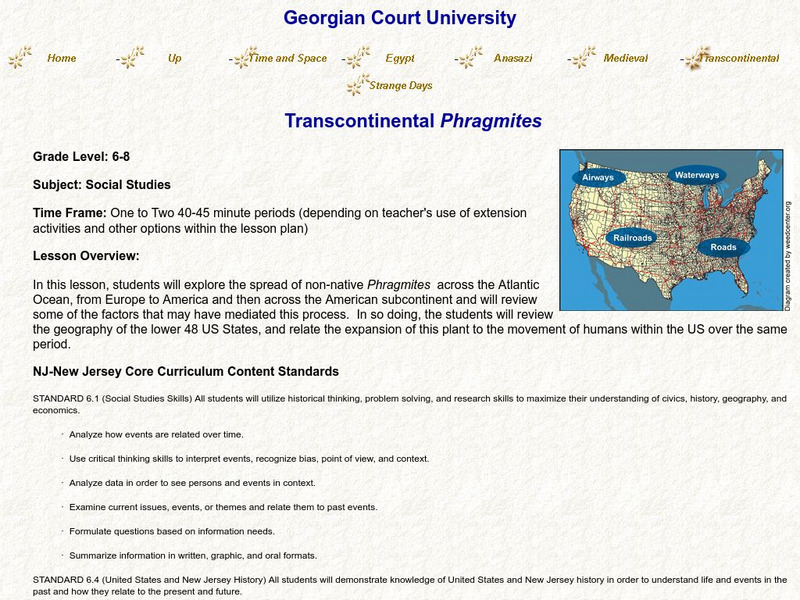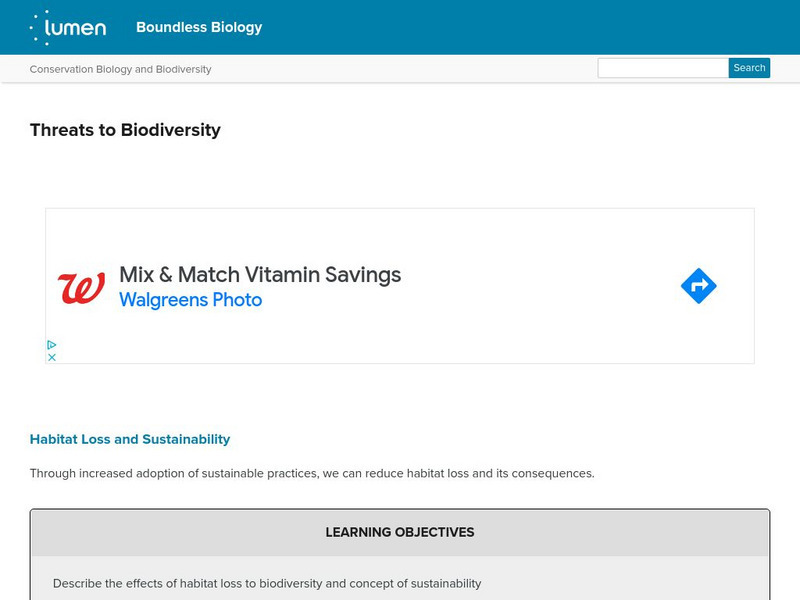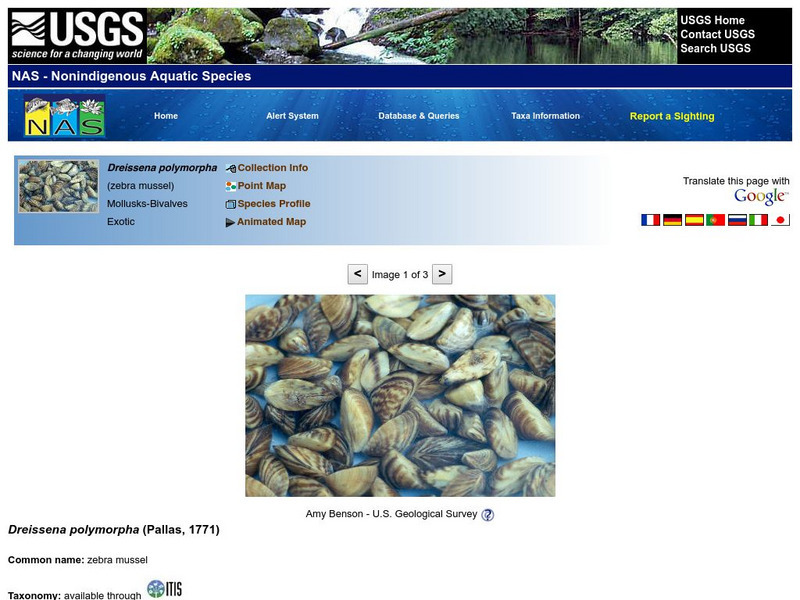University of Florida
Uf Ifas: Silent Invaders
Learn about plants specific to Florida including the effects of invasive species.
Other
What Are Aquatic Nuisance Species and Their Impacts?
This site offers a basic explanation of what nonindigenous species are, their environmental and economic impacts, and public health concerns. Specific examples of nonindigenous animals and plants are given and the huge impact they have...
NOAA
Noaa: Your Alien Dodecahedron [Pdf]
Define what invasive species are and learn how they may affect the environment. Construct a twelve sided dice with examples of invasive species to help educate others about the topic.
Other
Transcontinental Phragmites
For this lesson, students will examine the spread of Phragmites, an invasive species, across the Atlantic from Europe to the United States, and look for connections to human navigation patterns, while applying their knowledge of American...
Lumen Learning
Lumen: Boundless Biology: Threats to Biodiversity
Looks at the impact of overharvesting, such as overfishing, on biodiversity. It talks of the 'tragedy of the commons,' where harvesters do not feel responsible for protecting a species because they fish in shared areas. It also touches...
US Geological Survey
U.s Geological Survey: Nonindigenous Aquatic Species (Nas): Zebra Mussel
A detailed site that describes the physical characteristics of the zebra mussel, provides a map that depicts the native range of this shellfish, discusses the means of introduction into our country, and delves into the impact of this...
Other
Glfc: Sea Lamprey Control in the Great Lakes: A Remarkable Success!
Good article from the Great Lakes Fishery Commission about the ongoing battle with the sea lamprey, an invasive species, in the Great Lakes Region of the U.S.
Environmental Education for Kids
Eek!: Alien Profile: Gypsy Moth
Learn how the gypsy moth first came to North America, how it spread, how to identify it, its life cycle, the damage it causes, and what can be done to fight this invasive species.
American Institute of Biological Sciences
Action Bioscience: Loss of Wetlands: How Bird Communities Are Affected
With increased deforestation, invasive species, and other human actions harming or eliminating the wetland habitats the bird populations are decreasing. Scientists are working diligently to restore the wetland birds' habitats.
BSCS Science Learning
Bscs: Frog Eat Frog World
Using maps and graphs of large data sets collected in FrogWatch, learners will determine the range, preferred land cover, and proximity to water of the American bullfrog to figure out the bullfrog's requirements for food, water, and...
University of Florida
Florida Museum of Natural History: Pterois Volitans: Red Lionfish
The Florida Museum of Natural History presents this informative article on the Red Lionfish which is native to reef habitats of the Indo-Pacific. General information including photographs and a habitat map.
Thinkport Education
Thinkport: Qualitative & Quantitative Information: Tree Destroying Bugs
In this science-themed literacy lesson, middle school students read about an exotic bug and integrate qualitative and quantitative information through close reading and viewing of diagrams.
Other popular searches
- Invasive Species Graph
- Ecology Invasive Species
- Competition Invasive Species
- Invasive Species Game
- Lessons on Invasive Species
- Invasive Species of Michigan
- Invasive Species Graphing
- Invasive Species Web Quest
- Nutria Invasive Species
- Invasive Species Worksheet
- Exotic Invasive Plant Species
- Invasive Species Articles


![Noaa: Your Alien Dodecahedron [Pdf] Activity Noaa: Your Alien Dodecahedron [Pdf] Activity](https://d15y2dacu3jp90.cloudfront.net/images/attachment_defaults/resource/large/FPO-knovation.png)






